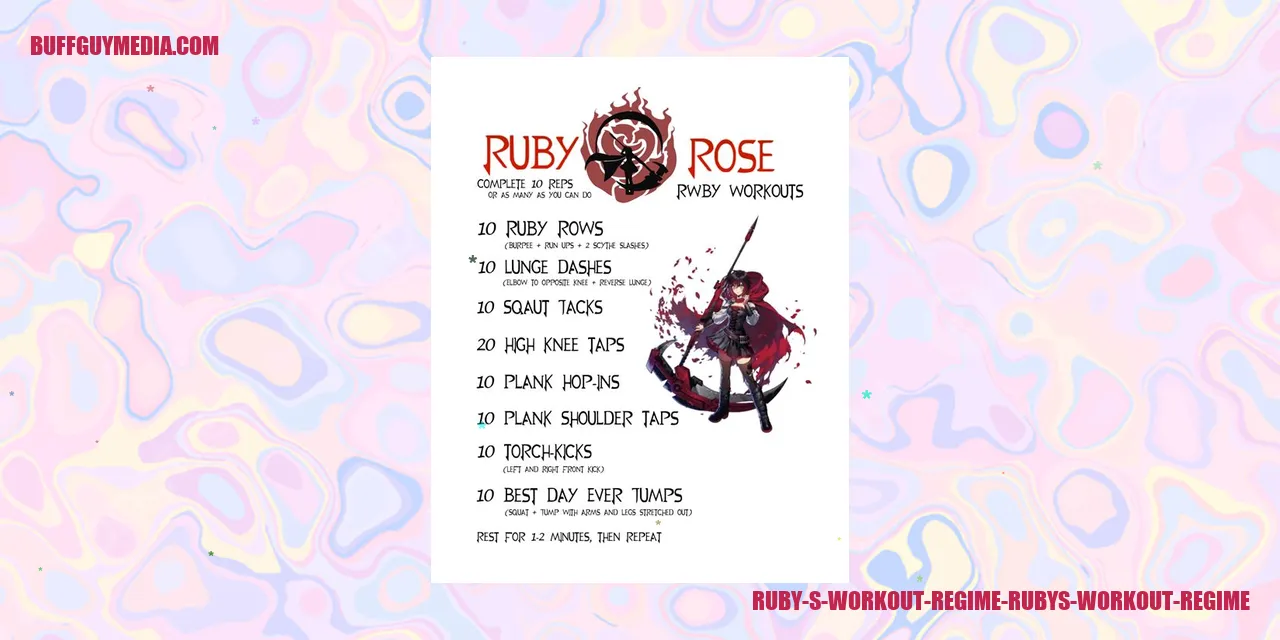When Can I Workout After Wisdom Teeth Removal?
When Should I Resume My Exercise Routine After Wisdom Teeth Extraction?
Light Exercises – Listen to Your Body
Following wisdom teeth extraction, it is crucial to prioritize proper healing before resuming your fitness regimen. During the initial few days after the procedure, it is advised to avoid any form of exercise that may elevate your heart rate or cause excessive perspiration. This means refraining from engaging in rigorous physical activities or lifting heavy weights. However, once you start feeling better and receive approval from your dentist, you can gently reintroduce light exercises into your routine.
Moderate Exercises – Gradual Improvement
As your body continues to recover, you can gradually progress to more moderate exercises. After approximately one to two weeks, depending on your healing progress, you can safely incorporate moderate exercises that elevate your heart rate while ensuring you stay within a comfortable range. Examples of moderate exercises include brisk walking, cycling at a moderate pace, or engaging in low-impact aerobics. It is vital to pay attention to any sensations of pain or discomfort in the surgical area and adjust your workout intensity accordingly.
Intense Exercises – Patience is Key
Engaging in intense exercises, such as high-intensity interval training (HIIT), running, weightlifting, or participating in team sports, should be postponed for a longer period following wisdom teeth extraction. These activities can exert excessive strain on your body and potentially hinder the healing process. It is generally advisable to wait for a minimum of two to four weeks, or until you have made a full recovery, before reintroducing intense exercises. It is always recommended to consult with your dentist or oral surgeon for personalized guidance based on your individual circumstances.
Recommended Duration – Individual Variation
The duration of the recovery period before resuming your regular exercise routine after wisdom teeth extraction varies depending on the complexity of the extraction and each individual’s healing process. In most cases, incorporating light exercises can commence within the first week post-surgery. Moderate exercises can typically be reintroduced after two weeks, while intense exercises should be delayed for up to four weeks. It is crucial to adhere to the post-operative instructions provided by your dental professional and consult with them before engaging in any physically strenuous activities.
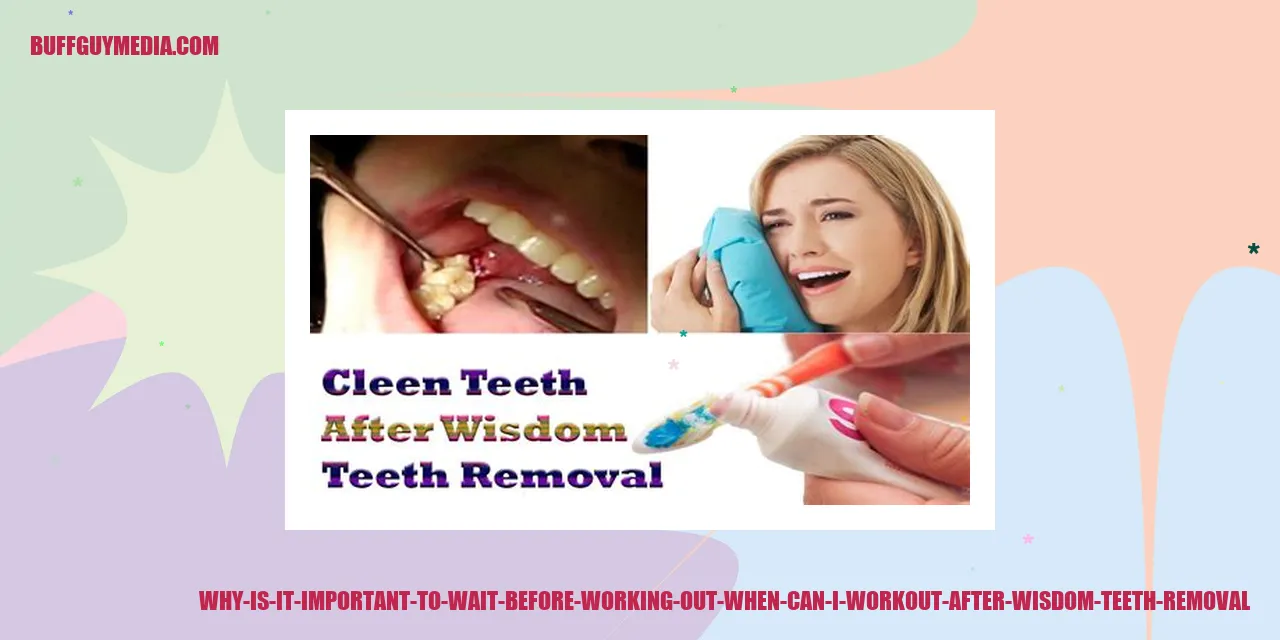
The Significance of Delaying Before Engaging in Physical Activity
The Healing Process
Allowing a sufficient delay before commencing your workout routine is vital for the healing process. When you push your muscles to their limits through intense exercise, they experience small tears. These tears necessitate a period of downtime to rebuild and strengthen, facilitating muscle growth. Neglecting this crucial healing process can lead to overtraining, heightening the risk of injuries, and interfering with long-term progress.
Reducing the Risk of Complications
Rushing back into exercise prematurely post-surgery or injury dramatically increases the chances of complications. Your body requires time to adjust and recover its strength after undergoing significant disruptions. Failing to adhere to the recommended waiting period may result in re-injury or the onset of other complications, which can impede your recovery progress. It is essential to listen to your body and follow medical professionals’ recovery guidelines for a safe and successful rehabilitation journey.
[[READMORE]]
Preventing Pain and Discomfort
Giving your body ample rest and recovery time post-workout can help minimize unnecessary pain and discomfort. Pushing yourself excessively without proper recovery can lead to muscle soreness, fatigue, and an increased vulnerability to injuries. By affording your body the required time to rest and rebuild, you significantly lower the likelihood of experiencing prolonged pain and discomfort, thereby enhancing your overall workout performance in the long run.
Alloting Sufficient Time for Rest and Recovery
Also read:
Nikki Duval Weight Loss: The Inspiring Journey to Achieving a Healthy Body
Healthy Big Green Egg Recipes
Rest and recovery play crucial roles in any fitness regimen. Engaging in workouts without allowing ample rest can result in overtraining syndrome, which manifests as decreased performance, fatigue, and heightened susceptibility to illness. By delaying your workout, you guarantee your body has enough time to repair and rejuvenate, enabling you to maximize the benefits of your exercise routine while optimizing your overall health and fitness levels.

Wisdom Teeth Removal: Exercises to Avoid
Avoid High-impact Activities
When it comes to recovering from wisdom teeth removal, it is crucial to steer clear of high-impact activities that exert excessive strain on your jaw. Engaging in contact sports like basketball, football, and hockey, as well as exercises involving intense jumping, running, or heavy jumping jacks should be avoided. These activities can potentially dislodge blood clots and impede the healing process, leading to complications.
Avoid Heavy Weightlifting
Engaging in heavy weightlifting can also be detrimental after wisdom teeth removal. Applying excessive force and strain to your jaw while lifting heavy weights can disrupt the healing process and potentially cause pain or discomfort. It is advisable to give your body ample time to recover before resuming heavy weightlifting routines or engaging in activities that require significant jaw strength.
Avoid Strenuous Cardio Exercises
Strenuous cardio exercises such as high-intensity interval training (HIIT), long-distance running, or intense cycling should be temporarily avoided after wisdom teeth removal. These workouts often involve vigorous jaw movement and can increase the risk of complications such as bleeding, swelling, and delayed healing. Opting for low-impact cardio exercises like walking or light jogging during the initial recovery period is a safer choice.
Avoid Contact Sports and High-risk Activities
Participating in contact sports or engaging in activities with a high risk of injury should be avoided during the recovery period after wisdom teeth removal. Activities that involve direct impact to the face, such as martial arts, boxing, or wrestling, may pose a threat to your healing mouth. It is important to wait until your oral surgeon gives you the green light to resume these activities without risking complications or injury.
Remember, the healing process after wisdom teeth removal requires patience and proper care. It is vital to follow the instructions given by your oral surgeon and give your body enough time to recover. Neglecting these precautions may result in complications and delayed healing.

A Guide to the Optimal Wait Time Before Initiating Light Exercises
Healing Duration
Following dental procedures like the extraction of wisdom teeth, it is imperative to allow your body a sufficient period for healing before commencing any physical activities, particularly light exercises. The recovery duration differs from person to person but typically lasts around one to two weeks for the initial healing phase.
Consultation with Dental Experts
Prior to embarking on any exercise regimen following wisdom teeth removal, it is of utmost importance to consult your dentist or oral surgeon. They will evaluate your unique case and offer personalized guidance based on the progress of your individual healing process and any potential complications.
Absence of Adverse Reactions or Excessive Bleeding
Prior to gradually reintegrating light exercises, it is vital to ensure that you do not experience any indications of complications or excessive bleeding. Warning signs may include intense pain, severe swelling, infection, or prolonged bleeding. If you encounter any of these symptoms during the recovery period, it is critical to promptly contact your dentist or oral surgeon.
Progressing Gradually Based on Personal Comfort
Once you have obtained approval from your dental specialist or oral surgeon, you can gradually incorporate light exercises into your routine. The key is to listen to your body and advance at a pace that feels comfortable for you. Begin with low-impact activities such as leisurely walks or gentle stretches and gradually increase the intensity or duration as your healing progresses.
Remember to stay hydrated, avoid vigorous activities, and steer clear of exercises that may cause trauma or impact the surgical site. It is crucial to prioritize your recovery and refrain from rushing into rigorous exercises that could potentially hinder the healing process.

Important Precautions to Consider During Your Workout
Maintaining Optimum Hydration Levels
Hydration plays a crucial role in your workout performance. It is essential to consume an ample amount of water before, during, and after your exercise session. Hydrating adequately helps replenish the fluids lost through perspiration and ensures optimal muscle function. Make it a habit to always have a water flask with you and take regular sips, especially during intense workouts when sweating is at its peak.
Avoiding Strenuous Movements That May Strain Healing Areas
If you have recently undergone surgery or any medical procedure, it is vital to avoid engaging in exercises that exert excessive pressure on the healing areas. It is recommended to consult with your healthcare provider or physical therapist to identify which movements or workout routines are safe for you. Adhering to this precautionary measure not only promotes effective healing but also minimizes the risk of complications.
Attentively Monitoring for Discomfort or Pain
When working out, it is essential to pay close attention to how your body feels. If you experience any discomfort or pain during your exercise routine, it is imperative to stop immediately. Ignoring or pushing through pain can result in further injury or harm. It is wise to consult with a qualified healthcare professional who can evaluate the situation and provide guidance or recommend suitable modifications to your workout program.
Customizing Exercises to Suit Individual Needs
If you have pre-existing conditions such as joint issues or muscle injuries, it is crucial to modify exercises to accommodate your unique requirements. This may involve adjusting the intensity, range of motion, or utilizing additional support or specialized equipment. Enlisting the assistance of a personal trainer or certified fitness expert can be beneficial in identifying suitable modifications that ensure a safe and effective workout regimen.
When it comes to working out, it is essential to take specific precautions to prevent injuries and ensure overall well-being. By maintaining proper hydration levels, avoiding strain on healing areas, vigilantly monitoring discomfort or pain, and customizing exercises as needed, you can enjoy a productive workout routine while keeping yourself safe and protected.

Discovering the Telltale Signs of Complications After Exercise
Profuse Bleeding
In the realm of exercise, bloodshed is not uncommon, especially during vigorous weightlifting sessions. However, excessive bleeding can indicate a more grave concern. If you find yourself hemorrhaging considerably, experiencing blood in your urine or stool, or if applying pressure fails to stop the bleeding, it is crucial to seek immediate medical attention.
Intense Pain or Swelling
Experiencing severe pain or persistent swelling following a workout could be an indicator of an underlying issue. While mild muscle soreness is a typical aftermath of physical activity, severe or chronic pain that impedes your movement or daily tasks may suggest complications. Likewise, if you observe significant swelling, particularly in a joint, it is imperative to consult a healthcare professional for evaluation.
Persistent Jaw Stiffness
Suffering from lingering difficulty in opening your mouth after exercising might signify complications, especially if you have recently undergone oral surgery, like wisdom teeth removal. While limitations in jaw movement during the healing process are expected, an inability to open your mouth or experiencing excessive discomfort during such movements may warrant medical attention.
Uncommon Sensitivity in the Surgical Zone
For individuals who have undergone surgical procedures, such as dental extractions, experiencing an unusual level of sensitivity in the surgical area during or after a workout could be an indication of complications. If you notice heightened pain or discomfort exclusively in the surgical site, it is crucial to inform your healthcare provider for further evaluation or potential treatment.
How to Alleviate Pain or Discomfort While Exercising
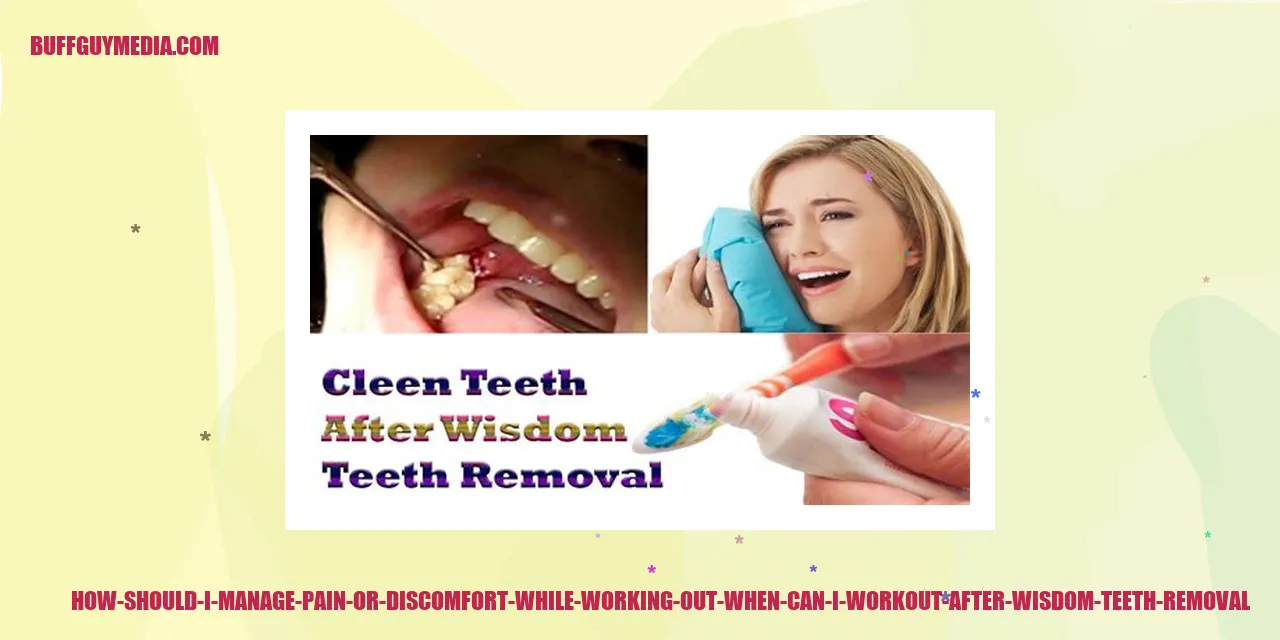
Optimize Your Pain Relief with Over-the-Counter Medications
When dealing with pain or discomfort during your exercise routine, effectively managing it can be achieved by using commonly available over-the-counter pain medications. It is important to strictly adhere to the recommended dosage indicated on the packaging and consult a healthcare professional if you have any concerns or persistent pain.
Mitigate Swelling with the Application of Ice Packs
If you happen to experience localized swelling while working out, the application of ice packs can prove to be highly beneficial in reducing inflammation. Applying ice for around 15-20 minutes at a time, with intervals in between, can help alleviate discomfort and control swelling. Remember to never apply ice directly to the skin, but rather wrap it in a cloth or towel.
Enhance Comfort with the Use of a Mouthguard or Splint
Engaging in contact sports or exercises that involve clenching your jaw may necessitate the use of a mouthguard or splint. These oral devices provide ample support and minimize discomfort, particularly for individuals who have a history of jaw-related issues or teeth grinding.
Prioritize Rest and Recovery to Soothe Aches and Pains
Ensuring adequate rest and recovery time is one of the crucial aspects of pain management during your exercise regimen. Overexertion can lead to excessive strain and potential injuries. Listen to your body, take breaks when necessary, and prioritize sufficient sleep and recovery periods between workout sessions.
To sum up, managing pain or discomfort while exercising requires a holistic approach. Optimizing pain relief with over-the-counter medications, mitigating swelling with ice packs, using mouthguards or splints when needed, and prioritizing rest and recovery all contribute to reducing discomfort and ensuring a safer and more enjoyable workout experience.
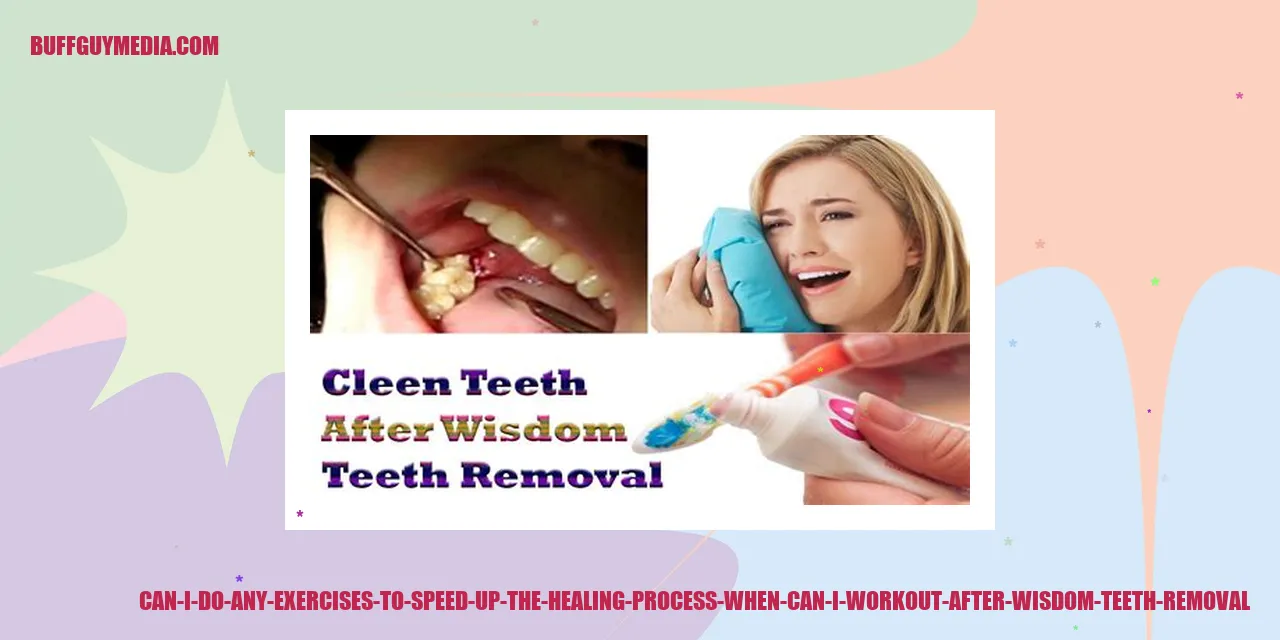
Can Physical Exercise Accelerate the Healing Process?
Following the Recommendations for Post-Operative Care
Accelerating the healing process after wisdom teeth removal and other surgical procedures requires adhering diligently to your dentist or oral surgeon’s post-operative care instructions. These instructions usually involve taking prescribed medications, applying ice packs, and refraining from certain activities for a designated period. By meticulously following these directives, you can ensure a smooth and efficient healing process.
Fueling Your Body with a Balanced Diet to Facilitate Healing
An integral aspect of the healing process is maintaining a well-balanced diet. Incorporate nutrient-rich foods into your meals that are abundant in vital elements such as vitamins A, C, and E, zinc, and protein. These nutrients are known to promote tissue repair and bolster the immune system. Additionally, drinking plenty of water and staying hydrated is crucial for the healing process.
Avoiding Tobacco and Alcohol for Optimal Healing
Tobacco and alcohol consumption can significantly impede the healing process and heighten the chances of complications. Smoking delays tissue healing and increases the risk of dry sockets, while alcohol can interfere with medication efficacy and hinder tissue regeneration. It is advisable to abstain from smoking and alcohol completely during the healing period to optimize your recovery.
Maintaining Excellent Oral Hygiene Practices
Practicing good oral hygiene is paramount in preventing infections and promoting healing. Gently brush your teeth, including the extraction sites, after each meal using a soft-bristled toothbrush. Rinse your mouth with saltwater or an antimicrobial mouthwash to mitigate the risk of bacterial growth. Avoid vigorous rinsing or spitting forcefully as it may dislodge blood clots and impede the healing process.
By incorporating these strategies into your post-operative routine, it is possible to expedite the healing process after wisdom teeth removal. Remember to consult with your oral surgeon or dentist for personalized advice and recommendations as individual healing times may vary.
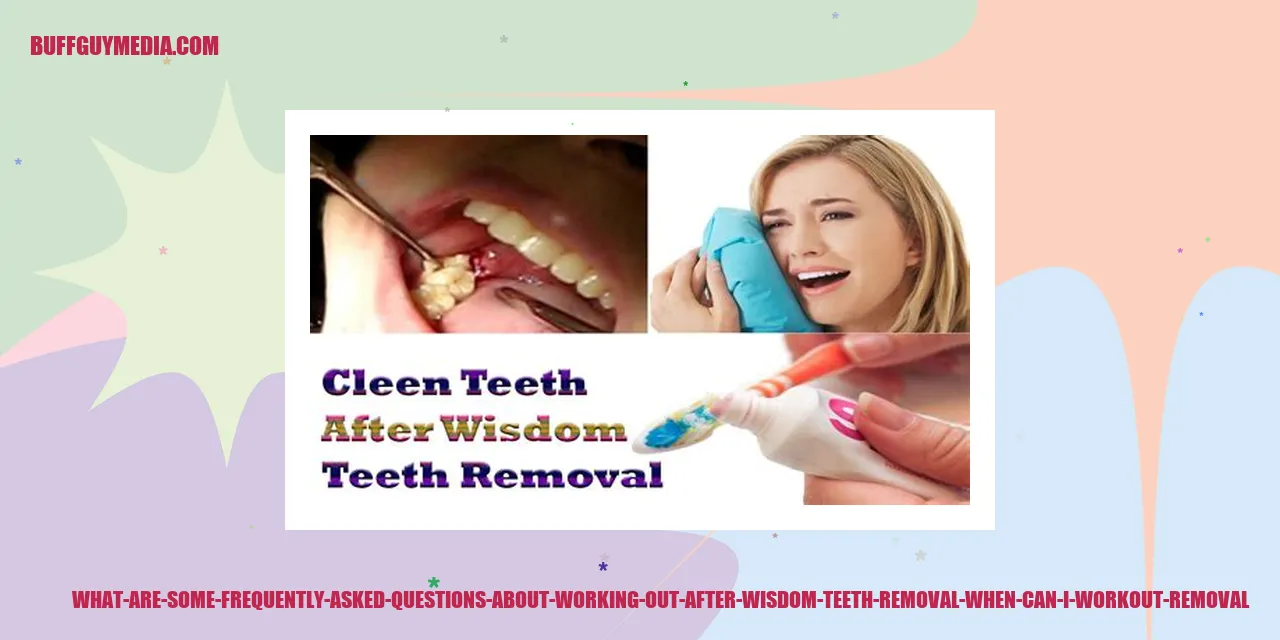
Discovering the Answers: Working Out After Wisdom Teeth Removal
Can I Engage in Weightlifting After Wisdom Teeth Extraction?
After having your wisdom teeth removed, one of the commonly asked questions is whether it is safe to resume weightlifting or engage in any intense exercises. It is generally advised to refrain from any physical activities that could dislodge the blood clots or exert excessive strain on the surgical area during the initial post-operative days. However, within about a week after the procedure, you can gradually reintroduce lighter weights or opt for low-intensity resistance training. Remember to pay attention to your body’s signals and seek personalized guidance from your dentist or oral surgeon.
Can I Incorporate Swimming or Water-Based Exercises?
Participating in swimming or water exercises can be an excellent choice to stay active after wisdom teeth removal. The buoyancy of water significantly reduces the impact on your body, allowing for gentle movements that are less likely to hinder the healing process. Nonetheless, it is crucial to refrain from using a straw or forcefully spitting water during the first few days, as these actions can disrupt the formation of blood clots, leading to delayed healing. It is advisable to wait until any swelling or bleeding has subsided before engaging in swimming or water-based exercises.
Is it Safe to Practice Yoga or Stretching Exercises?
Yoga and stretching exercises can often be reintroduced a few days after wisdom teeth removal, considering the progress of your recovery. It is important to be aware of any discomfort, swelling, or limitations in jaw movement while attempting certain poses or stretches. Avoid excessive jaw opening or any positions that put pressure on the surgical area. If you experience any pain or discomfort, it is best to discontinue the activity and consult with your dentist or oral surgeon for guidance.
When Can I Resume My Regular Exercise Routine?
The timeline for returning to your regular exercise routine after wisdom teeth removal may vary for each individual. Generally, it is recommended to wait for at least a week before gradually reintegrating more intense physical activities. Several factors, such as the complexity of the extraction, potential complications, and the speed of your recovery, will influence the precise timing. Always seek personalized advice and clearance from your dentist or oral surgeon before resuming your regular exercise routine.







